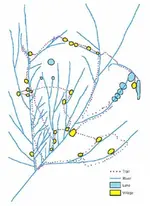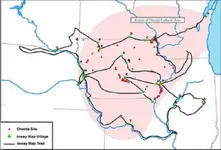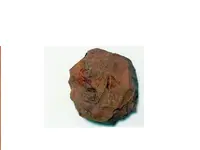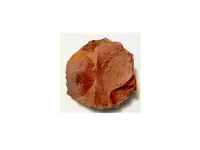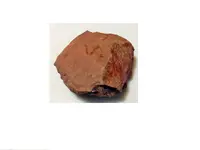The Tnet members who follow this forum, have an obvious interest in the signs and monuments that lead to treasure vaults. Three threads illustrate this interest.
http://www.treasurenet.com/forums/treasure-marks-signs/78421-basic-signs-symbols-you-have-found.html
This is Old Dog's thread. He started it in 2008 and it has had more than 625,000 views. Old Dog writes about Spanish sign.
http://www.treasurenet.com/forums/treasure-marks-signs/129235-treasure-signs-symbols-101-a.html
Rangler started this thread in 2009 and it has had over 337,000 views. A lot of information he posts, comes from another Tnet poster called Stilldign. Stilldign believed that the vault sites were set up by a secret society that has existed for centuries, and still exists. He has written that this secret society has created vault sites, all over the world, using identical signs and monuments.
Here is a more recent thread, started in 2016 by Sandy1. So far, Sandy's thread has had over 335,000 views. Sandy gives most of his observations in his first post, which makes it very easy to go back and look for information. He writes about Spanish and Church vault sites.
http://www.treasurenet.com/forums/t...5-guide-vault-treasure-hunting-condensed.html
I believe they are all excellent threads and they describe many of the same signs and monuments.
Because there is little or no historic documentation about monuments and symbols that lead to vaults, there has been a lot of debate about the material in these threads, some of it very heated.
I call the sites they describe, owl, heart, triangle sites. These items are common to their trails and vault sites. I've seen all three at the one site I've studied, over the past ten years. These signs and symbols have been pretty much beat to death so I don't plan on spending much time offering new information, because I don't have any. But, if anybody wants to talk about these symbols and monuments, please post your comments and pictures, if you like. These places exist, but instead of trying to explain the signs and symbols, I would like to find out where to look for them. I would also like to find evidence of when they were constructed and who they belonged to. I'll post a lot of random information, in the hopes that somebody will find something that grabs their interest and leads them to further research. I hope that our posters will share their research with the rest of us.
I'm trying to find out who constructed the Heart, Owl, Triangle sites so I thought I would take a look at the Spanish. Many claim that Charles Kenworthy is the modern expert on Spanish symbols and monuments so I thought I would take a look at what he had to say about the owl symbol. Owl monuments and carvings seem to be common at vault sites, as well as the related letters M and B and the number 13. Some searchers say that the owl sign is a certain indication of one or more vaults in the immediate area. I have five books by Kenworthy and I looked through Signs, Symbols, Shadow and Sun Signs, as well as, Spanish Markers and Trail Signs to Treasure in the United States. Kenworthy claims that the King of Spain required specific symbols and monuments to mark trails going to and from mining/treasure sites. I was surprised to see no mention of the owl or the related letters and number.
So, what does this mean? If the King wanted his mining/treasure sites confirmed, why would he not require the owl monument to confirm such a site as having vaults? Perhaps the sites were constructed by Spaniards, but if they were adding monuments that were not required, did their allegiance belong to the King of Spain or some other group?
After looking through his books, I did notice that some of his monuments had ancient Old World characteristics.
The empty stone chair
Appendix: Sacred Emptiness Mention of sacred thrones must raise the question whether in Phoenician centres deities could be venerated not only in aniconic forms but also in "sacred emptiness". Not only is it common for a deity to be represented seated on a throne, or for a votive object in the form of a throne to support a baetyl or some other cult object, but there are examples of thrones which are empty and so sloped or shaped as to be unable to contain anything.',w An empty throne itself, like a baetyl, could be the object of veneration. Lucian (De Dea Syria, 34) describes such a throne at Hierapolis: "In the body of the temple, as you enter, there stands on the left hand side, a throne for the Sun god; but there is no image upon it, for the effigies of the Sun and Moon are not exhibited ... (not from any prohibition, but because) the Sun and Moon are plain for all to see." Such a practice appears to be another variant of the generally aniconic tendency of Semitic religions, otherwise exemplified by the use of the baetyl. 41
The stone pig
Kenworthy shows several stone pigs in his monuments book. Stone pigs, or verracos, were sculpted by an ancient culture of Iberia.
https://en.wikipedia.org/wiki/Verraco
The egg shaped stone on a column, alpha and omega monuments
" Another form of making a boundary was a stone pillar
(at first unhewn), the sacred character of which was marked
by pouring oil upon it, and adoring it. The first attempt
at artistic development was by adding a head, and afterwards
other members of the body, at first with a symbolic meaning.
The phallus formed an essential part of the symbol; probably
because the divinity represented by it was, in th0 earliest
times, the personification of the powers of nature. So the
symbol is described by Herodotus, who ascribes its origin to
the Pelasgi. Pausanias gives a similar account, and adds
that the Arcadians were particularly fond of the four-sided
ornament."



